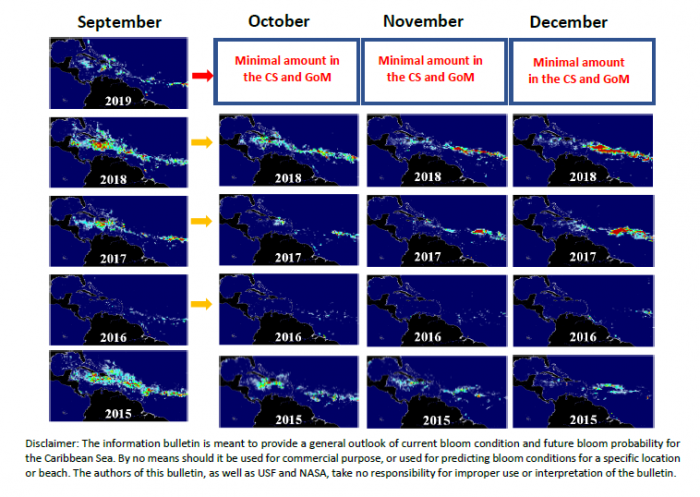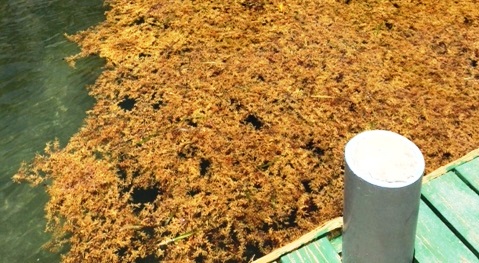The maps below show Sargassum abundance, with warm colors representing high abundance. During September 2019, Sargassum amount has decreased significantly from August 2019 in the Gulf of Mexico (GOM), Florida straits, Caribbean Sea (CS), and Central West Atlantic (CWA). The reductions are more than our August 2019 prediction, at rates higher than previous bloom years. In all regions combined, the total Sargassum amount is estimated to be ~3 million metric tons, lower than in September 2017 (5M tons), September 2015 (6.1M tons), or September 2018 (6.3M tons). The amount is much lower in the last week of September than in the first week of September, indicating a continuous reduction.
Looking ahead, because the Sargassum amounts in all regions above in the last week of September 2019 have decreased significantly from August 2019 and because the transported amount from the CWA to the CS is also expected to decrease, we project that all regions will experience minimal or no beaching events in October 2019. November and December 2019 may continue this trend. However, because there is still moderate amount of Sargassum in the east tropical Atlantic (not shown in the images below), there is a slight chance of increased amount in the CWA. We will keep a close eye on how Sargassum in the east tropical Atlantic may influence the CWA in the coming months.
More updates will be provided by the end of October 2019, and more information and near real-‐time imagery can be found under the Sargassum Watch System (SaWS, https://optics.marine.usf.edu/projects/saws.html




